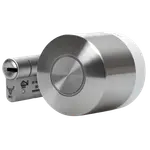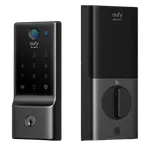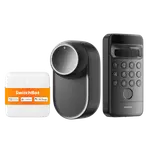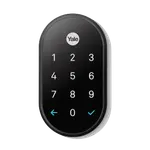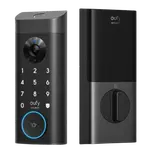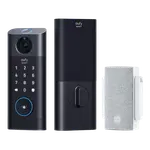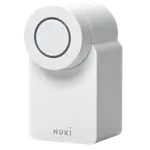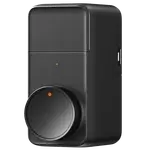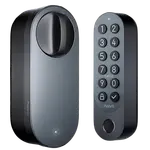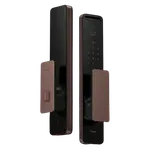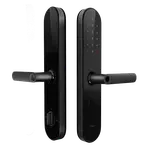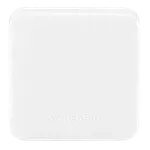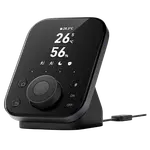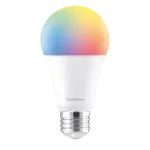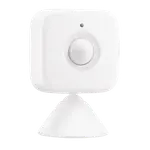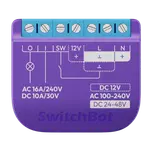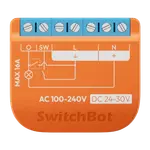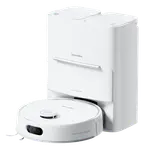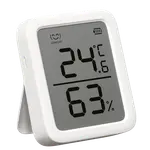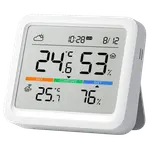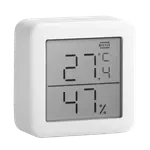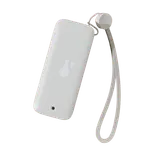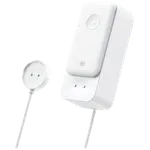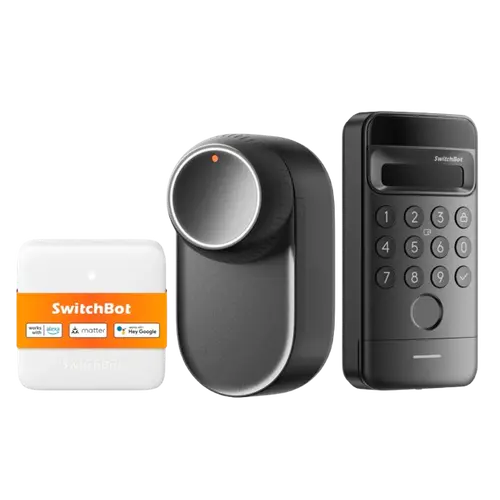
SwitchBot
SwitchBot Lock Ultra Vision Combo
Launch Year: 2025
Summary
Size & Materials: 367g / 12.9oz, Inner Panel Dimensions (122 x 62.6 x 66.8 mm), Available in colors
Power: Backup Battery (CR123A)
Connectivity: Bluetooth
Integrations: Google Home, Alexa, Apple HomeKit, Samsung SmartThings, Home Assistant, IFTTT, Matter
Lock/Unlock System: Remote, Bluetooth, Passcode, Fingerprint, Face Recognition, NFC Tag, Apple Home Key, Physical Key
Automatic Lock / Unlock: When Away, Afer Door is closed, By Geolocation
Alerts: Door Locks/Unlocks, Tamper-proof Alert, Low Battery Alert, Multiple Unlocking Failure Alert
Sensors: Door Open/Close
Features: One-Time Password, Periodic Password, Anti-peep Password, Emergency Fingerprint
Price History
Loading price history...
| Brand | SwitchBot |
|---|---|
| Headquarters | |
| Website | https://www.switch-bot.com |
| @SwitchBot |
Size & Materials
Devices are typically rated using the Ingress Protection (IP) scale, which indicates the level of protection against dust, solid particles, and moisture.
An IP rating (Ingress Protection rating) is a standardized way to describe how well a device is protected against solids (like dust) and liquids (like water). The rating consists of two digits:
- The first digit represents protection against solid particles (e.g., dust).
- The second digit represents protection against liquids (e.g., water).
First Digit (Protection Against Solids):
- IP0X: No protection against solid objects.
- IP1X: Protection against solid objects larger than 50 mm (e.g., accidental touch by hand).
- IP2X: Protection against objects larger than 12.5 mm (e.g., fingers).
- IP3X: Protection against objects larger than 2.5 mm (e.g., tools or thick wires).
- IP4X: Protection against objects larger than 1 mm (e.g., thin wires or small tools).
- IP5X: Dust-protected. Limited ingress of dust is allowed, but it won't interfere with operation.
- IP6X: Dust-tight. Complete protection against dust, ensuring no ingress of particles.
Second Digit (Protection Against Liquids)
- IPX0: No protection against water.
- IPX1: Protection against vertically falling water droplets (e.g., light rain).
- IPX2: Protection against vertically dripping water when tilted up to 15°.
- IPX3: Protection against water sprayed at an angle of up to 60° (e.g., light splashing).
- IPX4: Protection against water splashes from any direction.
- IPX5: Protection against water jets from any direction (e.g., a garden hose).
- IPX6: Protection against powerful water jets (e.g., heavy rain or washing with a hose).
- IPX7: Protection against temporary immersion in water up to 1 meter deep for up to 30 minutes.
- IPX8: Protection against continuous immersion in water beyond 1 meter.
NO
Length x Width x Height
- Length: the longest side of the device
- Width: the shorter side of the device
- Height: the vertical dimension of the device
-
Length x Width x Height
- Length: the longest side of the device
- Width: the shorter side of the device
- Height: the vertical dimension of the device
122 x 62.6 x 66.8 mm
The physical weight of the device, typically measured in grams (g) or ounces (oz).
Weight can be important for installation considerations, especially for wall-mounted or battery-powered devices.
367g / 12.9oz
Different color options available for the device to match your home decor.
Color choices allow you to better integrate smart devices into your existing interior design.
YES
Power
The type of batteries required to power the device.
Different battery types offer varying life spans, costs, and availability. Some devices use rechargeable batteries while others use replaceable ones.
3x 18350
The expected duration the device can operate on a single battery charge or set of batteries.
Battery life varies depending on usage patterns, connectivity type, and device features.
9 months
Emergency power source that activates when the main power fails.
Backup batteries ensure the device remains functional during power outages, maintaining security and access.
CR123A
Connectivity
Range: The 2.4 GHz band offers a longer range, meaning it can cover larger areas and penetrate solid objects like walls more effectively than 5 GHz.
Speed: Generally, 2.4 GHz provides slower speeds compared to 5 GHz due to a lower maximum data rate.
Interference: More prone to interference since many other devices (like cordless phones, microwaves, and Bluetooth devices) operate on the 2.4 GHz frequency, leading to potential congestion and slower network performance.
NO
Range: Offers a shorter range compared to 2.4 GHz and may have difficulty penetrating walls and other obstacles.
Speed: Typically provides faster speeds and higher data rates due to more available bandwidth.
Interference: Less prone to interference as fewer devices operate on this frequency, leading to a more stable connection.
NO
Bluetooth is a wireless communication technology used for exchanging data over short distances.
Bluetooth enables devices to communicate wirelessly within a short range, typically up to 10 meters (about 33 feet) for most consumer devices.
YES
Z-Wave is a wireless communication protocol specifically designed for home automation, providing reliable and secure connectivity for smart home devices. Operating in the sub-1 GHz frequency band, Z-Wave minimizes interference from common household wireless devices like Wi-Fi and Bluetooth, which typically use the 2.4 GHz band.
NO
Zigbee is a wireless communication protocol designed for low-power, short-range applications, commonly used in smart home devices, industrial automation, and other areas requiring reliable, low-data rate communication. It features low power consumption, making it ideal for battery-operated devices, and supports short-range communication, typically up to 100 meters. Zigbee employs mesh networking, allowing devices to relay data through each other to extend range and improve reliability. It supports data rates up to 250 kbps, suitable for small data packets, and ensures interoperability among devices from different manufacturers if they conform to Zigbee standards. Security is robust, with AES-128 encryption for data protection.
Zigbee devices need a Zigbee-compatible hub to connect and communicate with other devices in your smart home setup.
NO
Thread is a wireless communication protocol designed specifically for Internet of Things (IoT) devices, providing secure, reliable, and scalable networking. Unlike some other protocols, Thread is IP-based, which means it can seamlessly integrate with existing internet infrastructure. It operates in the 2.4 GHz frequency band and uses mesh networking to enhance reliability and extend range by allowing devices to relay data through each other.
Thread is optimized for low power consumption, making it suitable for battery-operated devices. It supports low-latency communication, which is crucial for real-time applications like home automation and security systems. The protocol ensures high security with AES-128 encryption and end-to-end security at the network layer. Thread also supports over-the-air updates, ensuring devices can stay up to date with the latest features and security patches.
Thread-enabled devices require a Thread Border Router (such as certain smart home hubs or routers) to connect to your home network and other Thread devices.
NO
Additional connectivity options not covered by the standard protocols.
This may include proprietary wireless protocols, infrared, or other specialized communication methods.
NO
Integrations
Google Home serves as a central hub for a variety of smart devices, including lights, thermostats, cameras, and speakers. It leverages Google Assistant for voice control, enabling users to manage their smart home with simple commands.
YES
Amazon Alexa is one of the most widely used smart home systems, known for its compatibility with a vast array of devices. Users can control everything from smart lights to appliances using voice commands through Echo devices.
YES
Apple HomeKit is designed for users in the Apple ecosystem, providing a seamless way to control compatible smart devices through iOS devices using the Home app or Siri. It emphasizes security and user privacy.
YES
SmartThings is a flexible platform that connects a wide range of devices from different brands, offering a unified interface for control. It supports various communication protocols, allowing for extensive device compatibility.
YES
Home Assistant is an open-source platform that allows for extensive customization and integration of a wide variety of smart devices. It supports a multitude of protocols and brands, making it ideal for tech-savvy users.
YES
IFTTT (If This Then That) is a web-based service that allows users to create simple automation sequences, known as applets, which enable different devices, services, and applications to work together seamlessly. It connects a wide range of products and services, facilitating interoperability and enhancing functionality.
YES
Matter is a unified, open-source connectivity protocol designed to standardize and simplify communication between smart home devices from different manufacturers. Developed by the Connectivity Standards Alliance (formerly the Zigbee Alliance), Matter aims to improve interoperability, security, and reliability across various smart home ecosystems.
Matter operates over existing networking technologies, including Ethernet, Wi-Fi, and Thread, providing flexibility in device connectivity. Its IP-based nature allows seamless integration with existing internet infrastructure and cloud services. Matter uses a mesh networking topology, particularly when operating over Thread, to enhance range and reliability by allowing devices to relay data through each other.
Security is a cornerstone of Matter, with end-to-end encryption and secure device onboarding processes ensuring robust protection for data and privacy. Matter also supports over-the-air updates, allowing devices to stay current with the latest features and security enhancements.
YES
Lock/Unlock System
The ability to lock or unlock the device from anywhere using a mobile app.
Remote access allows you to control your lock when you're away from home, useful for letting in guests or service providers.
YES
The ability to lock or unlock the door using Bluetooth connectivity from your smartphone or other compatible device.
Bluetooth unlocking works within a short range, typically up to 10 meters (about 33 feet), providing convenient keyless access when you're near the door.
YES
Numeric code entry for keyless access.
Passcode entry eliminates the need for physical keys and allows you to provide temporary access codes to others.
YES
Biometric authentication using fingerprint scanning.
Fingerprint access provides secure, keyless entry that can't be lost or copied like traditional keys.
YES
Biometric authentication using facial recognition technology.
Face recognition offers hands-free access and can identify specific individuals for personalized entry logs.
YES
Near Field Communication tags for proximity-based unlocking.
NFC tags provide convenient access by simply tapping a programmed tag or compatible device near the lock.
YES
Integration with Apple's Home Key feature for iPhone and Apple Watch unlocking.
Apple Home Key allows you to unlock your door using your iPhone or Apple Watch, with secure authentication.
YES
Traditional key backup option for mechanical unlocking.
Physical key backup ensures you can always access your home even if the electronic systems fail.
YES
Automatic Lock / Unlock
Automatically locks the door when you leave home based on location services.
Auto-lock when away ensures your home is always secured when you're not there, even if you forget to lock manually.
YES
Automatically locks the door after it has been closed for a set period.
Auto-lock after closing ensures the door is always secured without requiring manual action.
YES
Uses your phone's location to automatically lock or unlock based on proximity to home.
Geofencing can unlock the door as you arrive and lock it when you leave, providing seamless access control.
YES
Alerts
Notifications when the door is locked or unlocked, including who accessed it.
Lock/unlock alerts help you monitor home access and can notify you of unexpected entries.
YES
Notifications when someone attempts to physically tamper with or force the lock.
Tamper alerts provide security warnings when someone tries to break or manipulate the lock mechanism.
YES
Notifications when the lock's battery level becomes critically low.
Battery alerts ensure you can replace batteries before the lock stops functioning and potentially locks you out.
YES
Notifications when repeated failed unlock attempts are detected.
Multiple failure alerts can indicate someone is trying to guess your code or force entry to your home.
YES
Video
High Definition video recording at 720p resolution (1280x720 pixels).
HD video provides clear footage suitable for identifying people and objects in most home security applications.
NO
2K video recording at 1440p resolution (2560x1440 pixels).
2K video offers significantly more detail than HD, making it easier to identify faces and read text in recordings.
NO
The ability to capture clear video in low-light or complete darkness.
Night vision ensures your security system remains effective 24/7, even in areas without ambient lighting.
NO
Built-in memory for storing recordings, settings, or other data.
Internal storage provides immediate access to stored content without relying on external memory cards or cloud services.
NO
A slot for inserting a MicroSD card to expand storage capacity.
MicroSD card slots allow you to increase storage space and maintain local control over your recordings.
NO
Detects movement near the door and can trigger recording or alerts.
Motion detection helps monitor activity around your entrance and can provide early warning of visitors or potential issues.
NO
The distance from the device at which it can detect motion or activity.
Detection range determines how far from your door the device will notice approaching people or activity.
-
The ability to define specific zones for motion detection to reduce false alarms.
Customizable detection areas help focus monitoring on important areas like walkways while ignoring street traffic.
NO
Sensors
Sensor that detects whether the door is open or closed.
Door position sensing helps ensure the door is properly closed before locking and can alert you if it's left open.
YES
Features
Temporary access codes that expire after a single use.
One-time passwords provide secure temporary access for guests, service providers, or deliveries.
YES
Access codes that work only during specific time periods.
Periodic passwords allow you to grant access during certain hours, useful for cleaning services or regular visitors.
YES
Enables you to add random digits to your passcode and protect it from prying eyes.
YES
Special fingerprint that triggers silent alarms when used under duress.
Emergency fingerprints can secretly alert authorities if you're forced to unlock your door under threat.
YES
Integrated doorbell functionality with the smart lock.
Built-in doorbell eliminates the need for separate doorbell installation and can integrate visitor alerts with access control.
NO
Compare the best smart door locks by unlock methods, connectivity, battery life, integrations, security alerts, and more. Find the right lock for your home.
![Nuki Smart Lock Pro]() Nuki
NukiSmart Lock Pro
![Nuki Smart Lock Ultra]() Nuki
NukiSmart Lock Ultra
![Eufy Smart Lock C220]() Eufy
EufySmart Lock C220
![SwitchBot Lock Ultra Vision Combo]() SwitchBot
SwitchBotSwitchBot Lock Ultra Vision Combo
![Google Nest x Yale Lock]() Google
GoogleNest x Yale Lock
![Eufy Video Smart Lock E330]() Eufy
EufyVideo Smart Lock E330
![Eufy Video Smart Lock S330]() Eufy
EufyVideo Smart Lock S330
![Aqara Smart Lock U100]() Aqara
AqaraSmart Lock U100
![SwitchBot Lock]() SwitchBot
SwitchBotSwitchBot Lock
![Nuki Smart Lock Go]() Nuki
NukiSmart Lock Go
![SwitchBot Lock Pro]() SwitchBot
SwitchBotSwitchBot Lock Pro
![Aqara Smart Lock U200]() Aqara
AqaraSmart Lock U200
![Aqara Smart Lock D200i]() Aqara
AqaraSmart Lock D200i
![Aqara Smart Lock N100 Zigbee Edition]() Aqara
AqaraSmart Lock N100 Zigbee Edition
![SwitchBot Meter Pro (CO2 Monitor)]() SwitchBot
SwitchBotMeter Pro (CO2 Monitor)
![SwitchBot Lock Ultra Vision Combo]() SwitchBot
SwitchBotSwitchBot Lock Ultra Vision Combo
![SwitchBot Lock]() SwitchBot
SwitchBotSwitchBot Lock
![SwitchBot Lock Pro]() SwitchBot
SwitchBotSwitchBot Lock Pro
![SwitchBot Contact Sensor]() SwitchBot
SwitchBotContact Sensor
![SwitchBot Hub 2]() SwitchBot
SwitchBotSwitchBot Hub 2
![SwitchBot Hub Mini]() SwitchBot
SwitchBotHub Mini
![SwitchBot Hub 3]() SwitchBot
SwitchBotHub 3
![SwitchBot Hub 2]() SwitchBot
SwitchBotSwitchBot Hub 2
![SwitchBot Hub Mini]() SwitchBot
SwitchBotHub Mini
![SwitchBot Hub 3]() SwitchBot
SwitchBotHub 3
![SwitchBot Color Bulb]() SwitchBot
SwitchBotColor Bulb
![SwitchBot Motion Sensor]() SwitchBot
SwitchBotMotion Sensor
![SwitchBot Plug Mini]() SwitchBot
SwitchBotPlug Mini
![Switchbot Relay Switch 1]() SwitchBot
SwitchBotRelay Switch 1
![Switchbot Relay Switch 1PM]() SwitchBot
SwitchBotRelay Switch 1PM
![Switchbot S20]() SwitchBot
SwitchBotS20
![SwitchBot Meter Plus]() SwitchBot
SwitchBotMeter Plus
![SwitchBot Meter Pro]() SwitchBot
SwitchBotMeter Pro
![SwitchBot Meter]() SwitchBot
SwitchBotMeter
![SwitchBot Indoor/Outdoor Thermo-Hygrometer]() SwitchBot
SwitchBotIndoor/Outdoor Thermo-Hygrometer
![SwitchBot Water Leak Detector]() SwitchBot
SwitchBotWater Leak Detector
![Switchbot Water Leak Detector (Sensor Cable Edition)]() SwitchBot
SwitchBotWater Leak Detector (Sensor Cable Edition)



